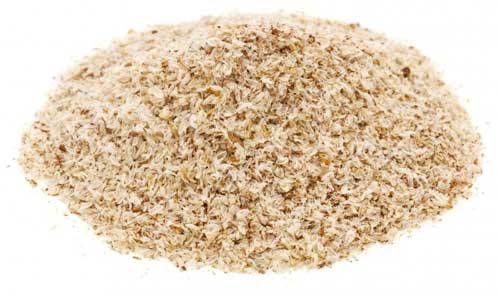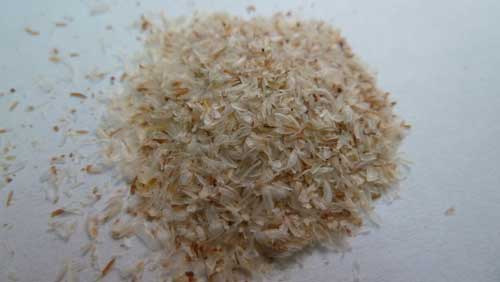
|
|
||||
| Our Pages ABOUT CONSTITUTIONAL MEDICINE
|
The parts used in medicine are the hulls, or ‘husks’ of the seeds of Plantago psyllium, or Plantago ovata. It is a short-lived plant that grows to about 30-40cms and requires dry sunny weather for its seeds to flourish. Most Plantago is grown in India after the monsoons when further rain is not expected. There are two main forms of Plantago, usually called Psyllium, on the market. You have to look closely at them to see the difference. The first is a well ground powder, the second is much rougher and you can see the individual ‘husks’. They both work but the Plantago husks are the better of the two.
Plantago seeds are often found in grain seeds and that is how they have spread all over the world. Plantago has been used for many centuries as a safe and natural method to improve bowel health. People with altered bowel function, either constipation or diarrhoea, can benefit from Plantago. Plantago is widely used in pharmaceutical preparations as a bulk fibre (e.g Metamucil, Bonvit, Fybogel) however the large percentage of additive sugars and flavouring chemicals in these products could be said to be creating a second problem whilst fixing the first. In recent times a lot of attention has been given to Plantago’s ability to reduce blood cholesterols and also to help with weight loss through its bulking effects in the stomach. Thomas Bartram writes of the actions of Plantago (which he calls Ispaghula) that it is a 'gentle bulk laxative without irritation, antidiarrhoeal, demulcent, bacteriostatic, increases stool output while decreasing transit time in healthy people' He suggests uses for it including 'chronic constipation, particularly in the elderly, irritable bowel syndrome, mucous colitis, amoebic dysentery, to assist the management of diverticular disease, to reduce incidence of bowel complaints. An alternative to the constant use of purgatives that decrease sensitivity of the gut mucus membranes. Useful in pregnancy. Hyperlipaemia (high blood fats) lowers cholesterol by eliminating excess bile salts. To assist slimming regime in obesity'. The British Herbal Pharmacopoeia (BHP) describes Plantago's actions as 'demulcent & laxative' and says it is indicated for 'chronic constipation, dysentery, chronic diarrhoea & cystitis' The BHP suggests a dose of 5-10 grams (2-4 tsps) for adults and 3 grams (1 and a half tsp) for children.
For some years now, against this proven and safe way of herbalism, there has been a rising tide of excessive caution and scare-mongering in many parts of the world. The same authorities that, not so long ago, decried herbal medicines as ineffectual, have now taken up a different adversarial position; that they are dangerous substances that should only be prescribed by Doctors, who of course have zero training in them. Unfortunately, the same unnecessary fear and worry has crept into many natural health websites and popular publications on herbs. Herbs that we have safely used for thousands of years, that have no reports of adverse reactions in the medical literature despite widespread use by millions of people, are suddenly described as contraindicated because of something that should have been seen as completely unimportant, or at the utmost a merely theoretical concern, such as a laboratory study on one of the herb's constituents to use an all too common example. I wonder sometimes if the writers of such articles feel that the herb will be more deserving of respect if it is thought to be a little bit dangerous, in other words more like a drug than something that has simply come out of the earth and been used by ordinary people for generations beyond count. There is just so much misinformation about herbal medicine on the internet now. Ludicrous claims and cautions abound in equal measure; it seems like one group are trying to make money out of the public whilst the other are busily trying to scare them off. I have to believe that the kind of reader who takes the time to read pages on herbs that are as extensive as this one is much less likely to be swayed by marketers or misinformers. I hope that you will keep your wits about you if you get conflicting opinions from people who have never really got to know these herbs, who have never worked with them, or learned how to use them safely and effectively. I want to remind you that the reason that herbs can never be patented and owned by any individual or corporation is because they are, and always will be, the People's medicine. They belong to all of us and it is my great hope in sharing this work that you will learn how to use them wisely for yourself, and the people you care for. Be safe, but do not be afraid.
I have used truckloads of Plantago husks in my years in practice, which may not be as much of an exaggeration as it sounds! A lot of people in the modern world do not have good bowel health. Maybe this is because we are not eating enough fibre, maybe it is because we don’t move around as much as we ought to. I very rarely need to use laxatives for my patients, but I do use a lot of Plantago. It works like a kind of ‘gentle broom’ massaging through the bowel, cleansing and moving any retained materials down and out. Most importantly, Plantago in no way causes the bowel to become dependent on it. One of the quirky things about Plantago is that it can also be used in cases of diarrhoea to help the bowel get back to normal. How something can help both constipation and diarrhoea is worth thinking about. Plantago clearly has a gentle and normalising effect on the bowel. It is unable to be absorbed so however much you put in is all going to come out, but in the process it seems to make the bowel work better, regardless of what was going wrong in the first place. My practice in using Plantago husks (these levels may not work so well if using the psyllium powder) is to prescribe a dose range of 2-4 tsps, as heaped as they can be, 1-2 times each day. This means that a person may take as little as 2 tsps a day all the way up to 8 tsps a day. People can work themselves out if they know that they can and should experiment and that only they can tell what is the optimal dose and that they have as much time as they need to work that out. I usually recommend starting with 3 tsps once a day and then to go up or down from there according to what happens next. 3 tsps once a day has a good success rate, but if the problem is not obviously responding within 48 hours then the next step is to go up to 4 tsps. If that doesn't obviously work, the next step is to go up to the maximum dose of 4 tsps, twice a day. If the person is going too much or too often at just 3 tsps a day, then they should reduce the dose down to just 2 tsp and see how that goes for a while but don't take less than that, even if it seems to be having a marked effect. A certain level of dose is needed for the Plantago to swell up sufficiently to give the bowel a cleanse. Some people, especially if they have a history of irritable bowel syndrome or some other kind of sensitive gut health history, can find it hard to get used to Plantago. At first, they may feel more bloated on it and feel like it is making them go to the toilet too much. In most cases this soon passes, but in any case it is worth persisting with for at least 2 weeks to see if it can help improve bowel health overall. This is discussed more in the stage 2 section in the article on irritable bowel syndrome found here
If you can drink a glass of water reasonably quickly then you will have no problem taking Plantago husks. Put your Plantago husks in a clean, dry glass. The more tsps. you have to take the bigger the glass needs to be. Run the tap to get the water to a temperature that you know you can easily drink quickly, then gradually fill the glass whilst you are rapidly stirring in the husks. Ideally as soon as the glass is full you have stirred in the husks and so can straight away drink it all down in one go. The less time the Plantago spends in the water before you take it the better.
Much of the information here about the traditional uses of Plantago is consistent with the model of thinking whereby one may treat problem A with plant B. There is value in this approach, especially in how it helps us pass on useful knowledge to one another, but it falls short in one vital area; and that is that people are not all cut from the same cloth! Something that works brilliantly for one person may do less for another -- why is this? Part of the reason is that people vary in their constitutions as to whether they are either hotter or cooler and, at the same time, either dryer or damper. This useful and rather fascinating subject is introduced further here Another big part of using the right herb when it is most needed comes from understanding the need to treat what is going wrong for the person that had led up to their getting a health condition. In this light, Plantago can particularly offer its benefits when a nourishing action is needed in the 'cycle of healing', more about this here
Please understand that I cannot advise you, including on products or dosage, without seeing you in person in my clinic but for ideas
on how you might find a good herbalist in your area read here |
|
|
|
© 2011 R.J.Whelan Ltd
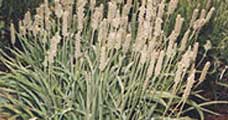
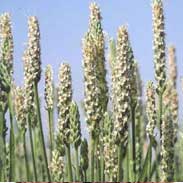
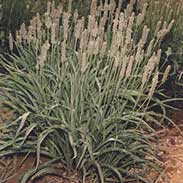
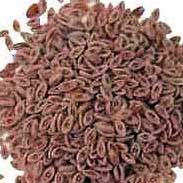 SEEDS
SEEDS

